The Apple iPhone 6s and iPhone 6s Plus Review
by Ryan Smith & Joshua Ho on November 2, 2015 8:00 AM EST- Posted in
- Smartphones
- Apple
- Mobile
- SoCs
- iPhone 6s
- iPhone 6s Plus
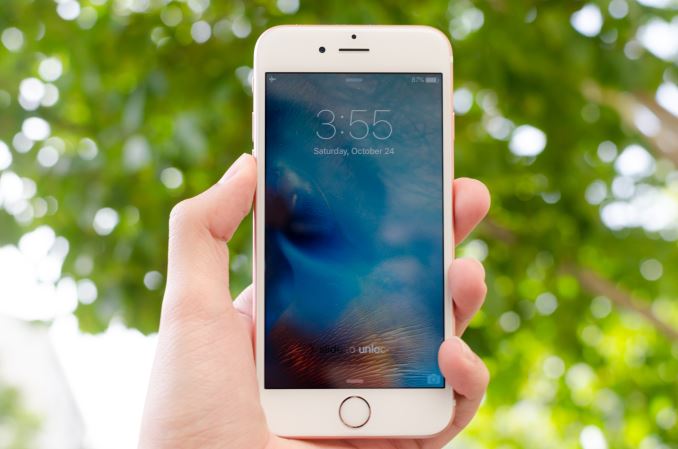
To be perfectly honest, this past year has been remarkably boring in the mobile segment. For whatever reason, phones have either stood still or regressed when it comes to overall quality. There are a few stand-outs that have been worth talking about like the Galaxy S6 lineup and the Galaxy Note5 lineup, but for the most part every phone I’ve reviewed this year has been disappointing in some way. I carry an iPhone 6 to make sure I stay current on changes in iOS, but my primary phone continues to be an HTC One M7. I was hoping to get a new Android phone this year, but so far nothing has really piqued my interest.
Part of the problem this year is that performance and battery life haven't been the most impressive in a lot of cases. By this point, it's really not a surprise that Snapdragon 810 doesn't deliver as much performance as it needs to for the amount of power that it draws. However, even independent of SoC it seems a lot of OEMs haven't really pushed the bar in design or attention to detail. Some phones have cameras with almost unacceptable post-processing quality, others continue to have poorly calibrated displays, and the ones that have none of those have problems with software experience or something else. In general, no Android phone I've seen this year really delivers everything that I'd want in a single package. There are phones that are clearly better than others, but nothing that rises to the level that I'd want before putting down a few hundred dollars.
In light of this lack of competition in the market, it's arguable that Apple is facing less competition than before. The iPhone 6s would continue to sell quite strongly even if this year's refresh was relatively minor as they would still end up quite strong competitively as they would be able to capitalize on momentum from previous years. If you were unfamiliar with the iPhone 6s and Apple's iPhone launch cycle, at first you might be convinced that Apple has done exactly that. However, in general the iPhone release cycle is such that industrial design is constant for two years at a time, so every other year sees a design refresh. When the design isn't refreshed, the phone often carries significant internal changes. In the past, the iPhone 3GS brought a better SoC, a faster modem, and a better camera. The iPhone 4S brought a new SoC, camera, and Siri. The iPhone 5s brought a new SoC, camera, and TouchID. In general, we can see a pretty clear pattern of evolution but it seems that with the 5s the refresh launches have generally brought new features as it has become insufficient to simply ship a faster SoC and possibly a modem and camera refresh to justify a new smartphone.
In the interest of diving into these changes at a high level, we can start with our usual spec table, which can give an idea for whether there's anything immediately worth talking about.
| Apple iPhone 6s and 6s Plus | ||||
| Apple iPhone 6 | Apple iPhone 6 Plus | Apple iPhone 6s | Apple iPhone 6s Plus | |
| SoC | Apple A8 2 x 1.3GHz Apple Typhoon |
Apple A9 2 x 1.85GHz Apple Twister |
||
| GPU | PowerVR GX6450 | PowerVR GT7600 | ||
| RAM | 1GB LPDDR3 | 2GB LPDDR4 | ||
| Display | 4.7-inch 1334 x 750 IPS LCD | 5.5-inch 1920 x 1080 IPS LCD | 4.7-inch 1334 x 750 IPS LCD | 5.5-inch 1920 x 1080 IPS LCD |
| Size / Mass | 138.1 x 67 x 6.9 mm, 129 grams | 158.1 x 77.8 x 7.1 mm, 172 grams | 138.3 x 67.1 x 7.1 mm, 143 grams | 158.2 x 77.9 x 7.3mm, 192 grams |
| Camera | Rear Facing 8MP iSight with 1.5µm pixels + True Tone Flash Front Facing 1.2MP F/2.2 |
Rear Facing 8MP iSight with 1.5µm pixels + True Tone Flash + OIS Front Facing 1.2MP F/2.2 |
Rear Facing 12MP iSight with 1.22µm pixels + True Tone Flash Front Facing 5MP F/2.2 + Retina Flash |
Rear Facing 12MP iSight with 1.22µm pixels + True Tone Flash + OIS Front Facing 5MP F/2.2 + Retina Flash |
| Storage | 16GB/64GB/128GB | |||
| I/O | Apple Lightning connector, 3.5mm headset | |||
| WiFi | 2.4/5GHz 1x1 802.11a/b/g/n/ac, BT 4.2, NFC | 2.4/5GHz 2x2 802.11a/b/g/n/ac, BT 4.2, NFC | ||
| Price | $549 (16GB) | $649 (16GB) | $649/749/849 16/64/128GB | $749/849/949 16/64/128GB |
At a high level, there are already a number of changes that we can talk about. The SoC is new and improved for this year with improved performance and power. The rear camera now supports 4K video recording and has higher resolution photos than what we’ve seen before. The front-facing camera is now higher resolution as well. The iPhone 6s finally has 2 GB of RAM, with improved power and bandwidth along with improved multi-tasking that comes from additional RAM. The modem now uses less power and also capable of higher throughput, as is the WiFi chipset.
Outside of these spec sheet changes, Apple has implemented a number of new features. One of the major highlights is 3D Touch, in which the display is force-sensitive and allows for new user interface actions based upon the amount of pressure applied to a point on the display. The front-facing camera now uses the display as an LED flash of sorts in low light, which measures ambient light in order to determine what white balance to use along with a backlight driver that temporarily spikes brightness to up to three times the normal maximum brightness for effective lighting. Both cameras now have Live Photos, which records a 1.5 second segment of video before and after the photo taken to capture a moment rather than an instant without the complication that comes with videos.
Design
Of course, before we can get into all of these changes we can start by focusing on the most immediate change, which is the design. For those that are unfamiliar with Apple’s iPhone launch cycle, the S launch cycle usually retains the same industrial design as the previous iPhone. As a result, the changes here are rather scarce. Those interested in a detailed description of the design should refer back to the iPhone 6 review.
However, there have been changes to the look and feel of the iPhone 6s lineup. The first, and most immediate change is the addition of a new color that Apple calls Rose Gold. This is much redder in tone than what we saw with the Apple Watch Edition, to the extent that it looks more like a light pink with a gold tinge rather than gold with a light pink tinge. I’m probably the last person in the world to consult on what color looks best, but I don’t really see anything wrong with this color.
Outside of color, the iPhone 6s lineup has changed in a noticeable way when it comes to materials and in-hand feel. The aluminum back cover is now 7000-series, which increases rigidity with the addition of zinc which increases yield strength, or the pressure needed to permanently deform the material. It’s likely that relative to the iPhone 6, ultimate tensile strength has also increased, although given that tensile strength is a test of how well the metal avoids breaking apart it’s unlikely that this property matters all that much. If you're actually reaching the ultimate tensile strength of a phone's back cover, you've probably already broken everything else in the phone.
With the use of this new aluminum back cover, the phone should be less susceptible to bending under extreme forces. I never had a problem with this when testing the iPhone 6 last year, but it shouldn’t be a problem now. Oddly enough, I did notice that the iPhone 6s is easier to grip than the iPhone 6, but the difference isn’t big enough that I would avoid using a case.
The other change is a new type of cover glass on the display, which uses a dual ion exchange process to make it tougher. According to Apple, this glass is the most durable of any in a smartphone today. A simple search with Google gives reason to suggest that Corning is making this glass as Corning holds a patent for this process. While we have no idea what Apple’s process is, the same dual ion exchange process occurs, which creates two distinct stressed layers that improves impact strength relative to a standard single ion exchange that is seen in Gorilla Glass.
Other than this, the design of the iPhone 6s remains quite good. The rounded edges and slightly curved glass help with in-hand comfort and things like the placement of the 3.5mm headphone jack on the bottom is a smart idea as the headphone jack is easily accessible when the phone is inside a pocket. We can talk about how the camera hump means that the phone doesn't rest completely flat on a table, but given that the phone has gotten about 15 grams heavier in both the iPhone 6s and 6s Plus I suspect it makes sense for Apple to avoid making the phone any thicker with extra battery than they have now. I would rather see thinner lines to insulate antennas here, but I suspect that there is some RF requirement that makes it difficult for this to happen.
Compared to something like the HTC One M9 which also has an aluminum unibody design Apple is far ahead in terms of overall ergonomics and cohesiveness. Relative to the Samsung Galaxy S6 I think the iPhone 6s is noticeably more comfortable due to the more rounded edges, but the iPhone 6s Plus and Galaxy Note 5 are pretty close in overall ergonomics. I do wish Apple would go to a front-ported speaker for the iPhone, but it seems that this is unlikely to happen due to the home button and bezel constraints.


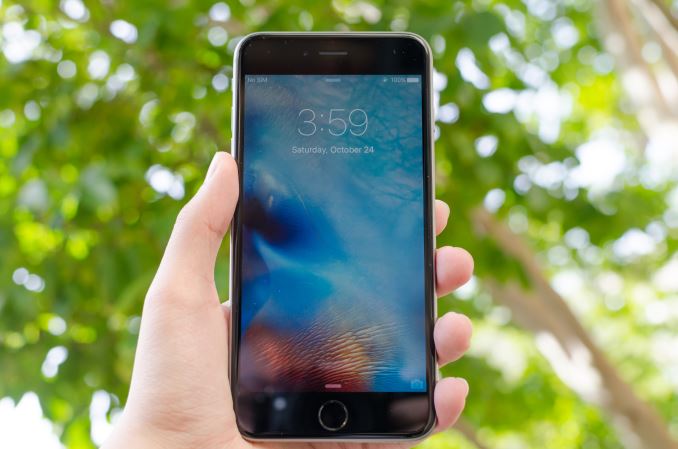
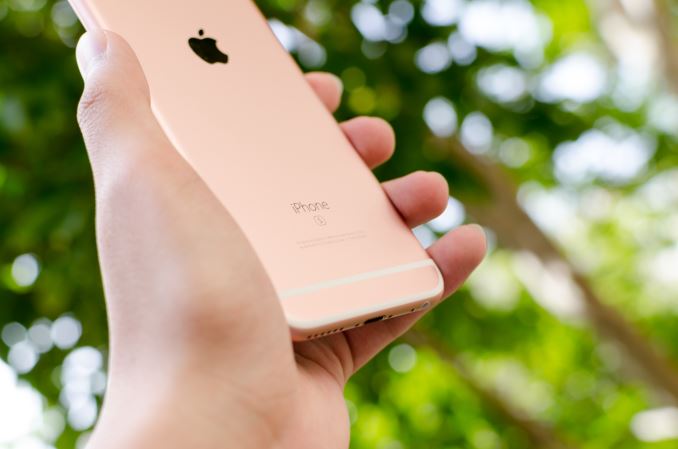
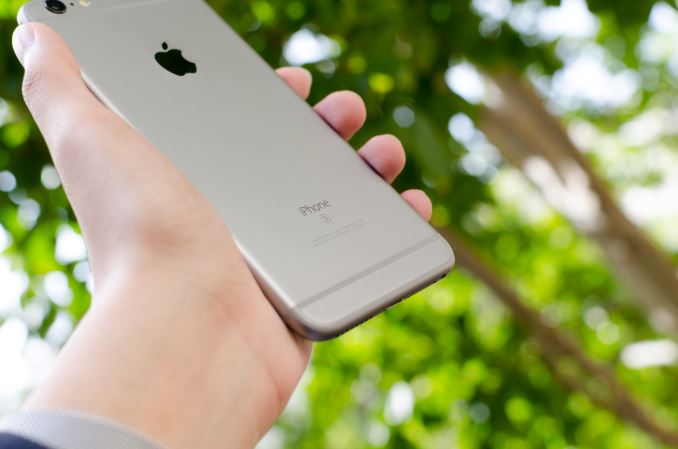
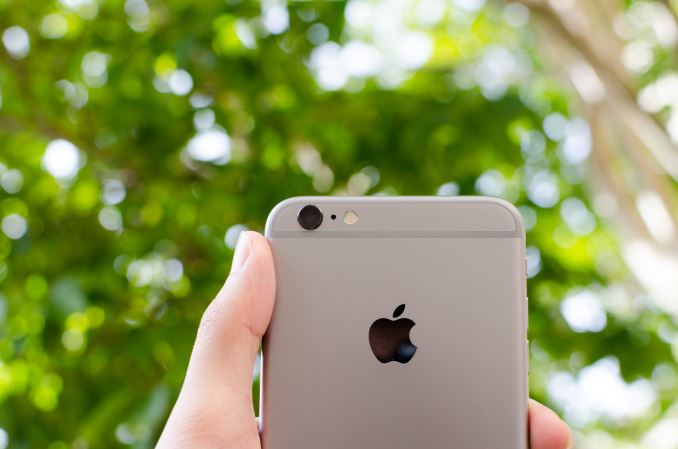
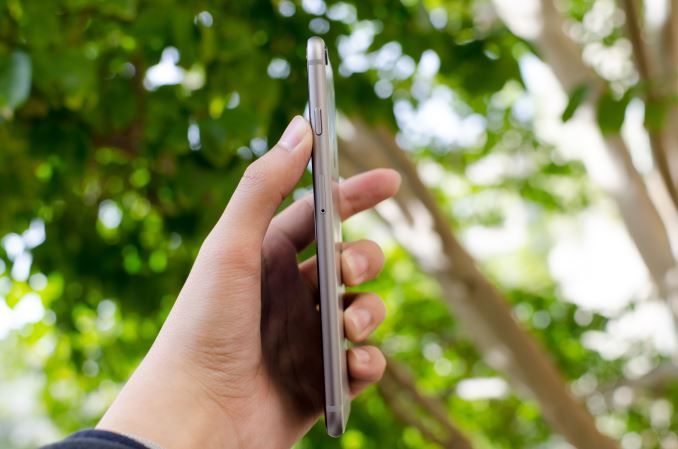
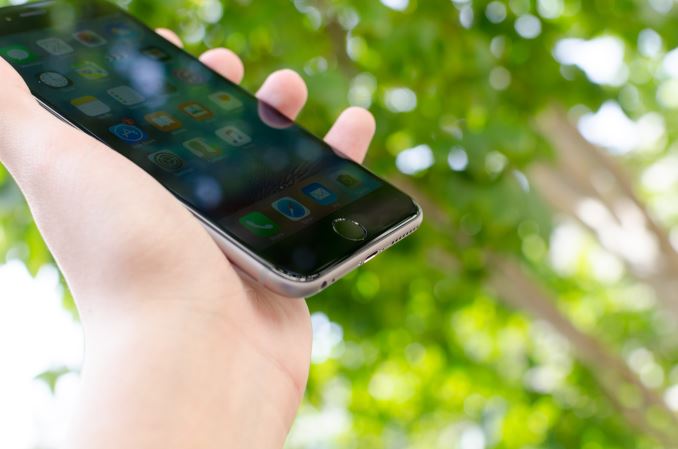
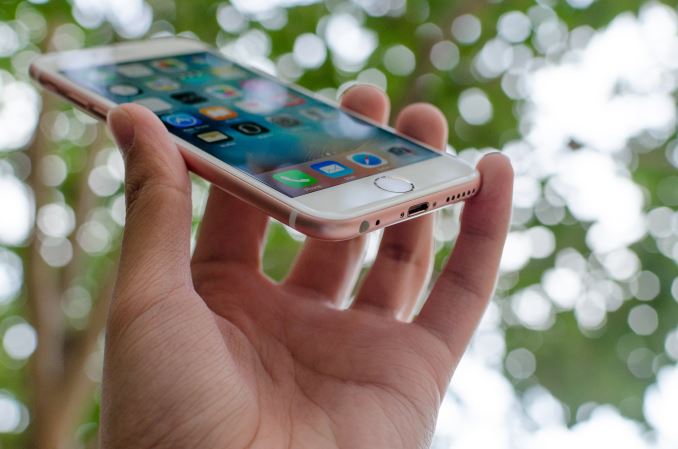








531 Comments
View All Comments
RealityMonster - Tuesday, November 3, 2015 - link
SIGH.The screen isn't 'low res'. The pixels on most Android phones are superfluous. They burn power and you can't see them at normal viewing distances anyway. The extra pixels aren't doing you any good. They're harder on the battery AND the GPU.
The SOC benchmarks are 100% consistent with every other benchmark I've ever seen anywhere. Per clock, the A9 is just the best SOC that exists right now. They really do have incredibly good chip designers working at Apple--Apple bought up a bunch of companies that mattered years ago and everyone was confused until they started cranking out stuff like this. I challenge you to create a real-world test where the A9 doesn't outperform its counterparts. Do you have any evidence to show that the SOC are somehow invalid?
The camera resolution is one of the least important things about the camera, and I wish everyone would stop banging on about the number of megapixels in phone cameras because it really just makes you look like you don't know what you're talking about. You know what other camera has a 12MP sensor? My Nikon D3s. If you try to tell me that a higher resolution sensor in a phone somewhere would take better pictures than my D3s, even if we somehow leveled the playing field in terms of lenses, you'll be laughed out of the room.
2GB of RAM is not the same sort of limitation under iOSs as it is under Android. The nature of virtual machines and garbage collection under Android means that you need a lot more wiggle room for the OS to function optimally.
I can't speak to how 'must have' faster LTE is (it's not, to me). My phone application sits in a folder on my second screen. It's so unimportant, it shares the folder with TimeHop. While it's a fair criticism that some people may care about that sort of thing, the 'phone' function of my iPhone is honestly almost an afterthought.
No micro SD is common across smartphones, and I would consider having it something that you would grade other phones UP for as a nice option, rather than grading any phone without it down. The cost of extra storage is a fair cop; 16GB devices shouldn't even exist anymore, especially if you're going to make each photo take up twice as much space by default, and let the device record 4k video. The proprietary connector is a BETTER connector, but has no real bearing on anything. You get a cable with the phone, they're cheap to buy if you need more. It's the lamest of complaints.
If you want an iOS 9 review, that's something else. This is a review of the iPhone 6s(+). The limitations of the software aren't meaningful when discussion the build of the hardware.
toukale - Monday, November 2, 2015 - link
Why would anyone be shocked at this point. And with the iPad Pro around the corner, Apple have cemented themselves at the best mobile design house on the planet. I never though I would be writing those words a few years ago.Chaser - Monday, November 2, 2015 - link
I know what you mean. I recently had the opportunity to purchase a new tablet. Phone wise I have been an Android man for years. But tablet wise I did my research and the iPad Air 2 has no competition. It is a quick and easy go to device that a a tablet should be with unparalleled development. can't believe I am saying that today. Can't believe i bought one but for a tablet, I love it!jospoortvliet - Wednesday, November 4, 2015 - link
I wouldn't go for an Apple tablet actually. I'd buy a much lighter Sony, I think. But the 6s - I really hope the Android ecosystem gets its act together next year so I can buy a successor to my m7.duploxxx - Monday, November 2, 2015 - link
love the final words. This phone does excel in every possible theoretical benchmark there is :) Uber usage of nand (sequential....), power consumption, graphics etc and mainly ............ price.But then you take the reality benches and final results of real measurable tools and then its all up and downs with other devices out there. Not to mention that optimized IOS sw ends when the apple device is +2y old. it becomes a forced sluggish replacement.
looking at those results, knowing the price of this device it does not come even close to being gold. it should be silver just by the fact of its high price tag. Reality shows that for example the One plus being "old device" with a good balanced pricetag and nice performance scores in most testing is a way better bargain then this piece of fruit. Yeah you can use it as a scale. Its just forcetouch requirement because of the lack of IOS buttons and features. after owning 2 apples, never again for me.
V900 - Tuesday, November 3, 2015 - link
LOLOLOL!Of course.. When the tests and benchmarks put the new (AS WELL as last year's iPhone) above all other handsets, There's not much left for you to do, than just make up some arguments against iPhones.
Like that "optimized software ends after two years". Sure you can't use the newest features on your old phone.
But where Android handsets rarely see updates after a year, and usually get too slow and crufty for everyday use after two years, you see iPhones get updates for 3-5 years after release, and be perfectly fine and fast for their purpose.
My friends 10 year old son just got his 6 year old iPhone 3GS for his first phone. When was the last time you saw a 6 year old Android handset in use?
Heck, when was the last time you saw a 2-3 year old Android phone in use, that delivered a bearable performance?
Compare that with the tens and hundreds of 4-5 year old iPhone 4/5s that you see everyday still in use, and almost as zippy as when they came out? You get what you pay for.
darkich - Tuesday, November 3, 2015 - link
"Heck, when was the last time you saw a 2-3 year old Android phone in use, that delivered a bearable performance?"Now that is such aa ridiculous load of BS right there.
How about you read the first paragraph of the review and then inform yourself on how old the HTC one M7 is.
I myself feel the same as the author, having a 2 year old Note 3.
Nothing released so far makes me want to invest in a new device since the Note 3 still serves me remarkably well.
Heck, it actually performs BETTER than it did when it was new!
There were some issues with the transition from kitkat to Lollipop, probably because of the application needing time to optimize for ART.
But now, everything is a breeze.
I bought a new battery 3 months ago, and even that part (battery endurance) is better now than it was when my phone was brand new!
What makes that that more impressive is the fact that I'm actually using 100% out of my phone, having over hundred apps on it and doing stuff you wouldn't believe we're possible on a pocketable device - using it as a pc replacement, even for video editing and 3D modelling.
If you want evidence, just let me know.
V900 - Tuesday, November 3, 2015 - link
Why would a higher price than a mid-grade One+ detract from the score?!?You do understand that most markets are divided into low end, middle and highend? Right?
Android phones exclusively rule the low end, most of the mid end, and little of the high end.
Since the iPhone is a premium product, regularly reviewed as the best on the market, naturally it has a higher price than a mid end One+ that doesn't deliver close to the premium experience an iPhone does.
Would you also insist a BMW has to have a score deducted, because it's more expensive than a Kia?!?
krumme - Monday, November 2, 2015 - link
What about weight??6s plus is between a note 5 and 8 inch tab s2 !
Its a brick. Nokia style.
And the little comment about contrast is imo not consistent with real world experience.
Wait untill apple gets oled and the tone will shift.
Uncritical review.
iSeptimus - Monday, November 2, 2015 - link
Been waiting for this review. Always interesting to see this sites in depth reviews, for any phone.Lot of butt hurt Android users in the comments already. Is it really so bad that it's a good phone?